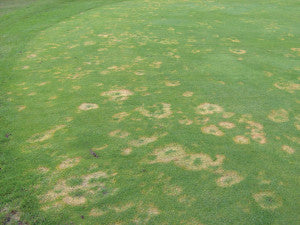Nutrient focus: Magnesium and Phosphite
As we head into the winter months sports turf managers thoughts will be turning to disease prevention and general plant health through the dormant growth period in a concentrated effort to maintain playing standards.
Two nutrients that have a lot to offer in this regard and which are often over looked in favour of Iron and other traditional turf hardeners are Magnesium and Phosphite. Both have value all year round but in particular through the winter months when day light hours are are substantially reduced.

No magnesium, no chlorophyll. No chlorophyll, no photosynthesis. Magnesium plays a major role in chlorophyll production, the process of plants taking light energy and using it to absorb and digest other nutrients into food. Fertiliser is all not plant food, it is a cocktail of essential nutrients that plants convert into food with the aid of sunlight energy.
Phosphite is very similar chemically to phosphate its chemical formulation is PO3, Phosphite is derived from phosphorous acid (H2PO4), which has a pH of 2.2 and, it has to be modified prior to use on amenity turf to prevent scorching with a neutralising substance, the most commonly used being potassium hydroxide (KOH).

The benefits of these two nutrients Magnesium and Phosphite when used on a regular basis and as part of an integrated disease management plan look to have real value as an alternative to the dangers of building up excessive levels of Iron and Sulphur through the use of traditional turf hardeners in particular over the winter months.
Ray Hunt is a Technical and Regional Sales Manager for Amenity Land Solutions. You can contact Ray Hunt on Ray.Hunt@amenity.co.uk or phone 07815 578920.
The Maxwell Bullet range of micronutrients is availble from ALS - www.amenity.co.uk
